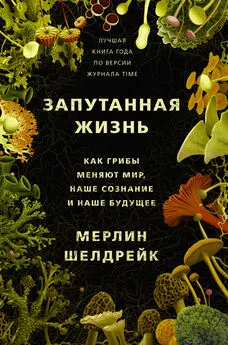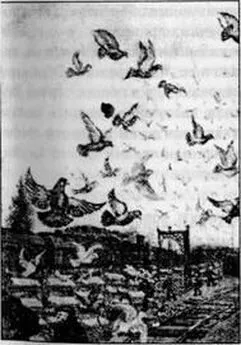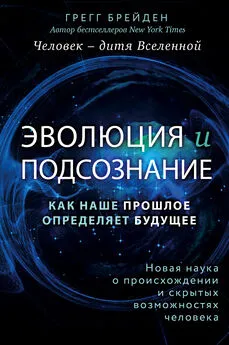Мерлин Шелдрейк - Запутанная жизнь. Как грибы меняют мир, наше сознание и наше будущее
- Название:Запутанная жизнь. Как грибы меняют мир, наше сознание и наше будущее
- Автор:
- Жанр:
- Издательство:Литагент АСТ
- Год:2021
- Город:Москва
- ISBN:978-5-17-122572-8
- Рейтинг:
- Избранное:Добавить в избранное
-
Отзывы:
-
Ваша оценка:
Мерлин Шелдрейк - Запутанная жизнь. Как грибы меняют мир, наше сознание и наше будущее краткое содержание
Талантливый молодой биолог Мерлин Шелдрейк переворачивает мир с ног на голову: он приглашает читателя взглянуть на него с позиции дрожжей, псилоцибиновых грибов, грибов-паразитов и паутины мицелия, которая простирается на многие километры под поверхностью земли (что делает грибы самыми большими живыми организмами на планете). Открывающаяся грибная сущность заставляет пересмотреть наши взгляды на индивидуальность и разум, ведь грибы, как выясняется, – повелители метаболизма, создатели почв и ключевые игроки во множестве естественных процессов. Они способны изменять наше сознание, врачевать тела и даже обратить нависшую над нами экологическую катастрофу. Эти организмы переворачивают наше понимание самой жизни на Земле.
В формате PDF A4 сохранен издательский макет.
Запутанная жизнь. Как грибы меняют мир, наше сознание и наше будущее - читать онлайн бесплатно ознакомительный отрывок
Интервал:
Закладка:
Islam F, Ohga S. 2012. The response of fruit body formation on Tricholoma matsutake in situ condition by applying electric pulse stimulator. ISRN Agronomy 2012: 1–6.
Jackson S, Heath I. 1992. UV microirradiations elicit Ca2+-dependent apex-directed cytoplasmic contractions in hyphae. Protoplasma 170: 46–52.
Jacobs LF, Arter J, Cook A, Sulloway FJ. 2015. Olfactory orientation and navigation in humans. PLOS ONE 10: e0129387.
Jacobs R. 2019. The Truffle Underground . New York, NY: Clarkson Potter.
Jakobsen I, Hammer E. 2015. “Nutrient Dynamics in Arbuscular Mycorrhizal Networks.” In Mycorrhizal Networks . Horton T, ed. Springer International Publishing, pp. 91–131.
James W. 2002. The Varieties of Religious Experience: A Study in Human Nature (Centenary Edition) . London, UK: Routledge.
Jedd G, Pieuchot L. 2012. Multiple modes for gatekeeping at fungal cell-to-cell channels. Molecular Microbiology 86: 1291–294.
Jenkins B, Richards TA. 2019. Symbiosis: wolf lichens harbour a choir of fungi. Current Biology 29: R88–R90.
Ji B, Bever JD. 2016. Plant preferential allocation and fungal reward decline with soil phosphorus: implications for mycorrhizal mutualism. Ecosphere 7: e01256.
Johnson D, Gamow R. 1971. The avoidance response in Phycomyces. The Journal of General Physiology 57: 41–49.
Johnson MW, Garcia-Romeu A, Cosimano MP, Griffiths RR. 2014. Pilot study of the 5-HT 2AR agonist psilocybin in the treatment of tobacco addiction. Journal of Psychopharmacology 28: 983–92.
Johnson MW, Garcia-Romeu A, Griffiths RR. 2015. Long-term follow-up of psilocybin-facilitated smoking cessation. The American Journal of Drug and Alcohol Abuse 43: 55–60.
Johnson MW, Garcia-Romeu A, Johnson PS, Griffiths RR. 2017. An online survey of tobacco smoking cessation associated with naturalistic psychedelic use. Journal of Psychopharmacology 31: 841–50.
Johnson NC, Angelard C, Sanders IR, Kiers TE. 2013. Predicting community and ecosystem outcomes of mycorrhizal responses to global change. Ecology Letters 16: 140–53.
Jolivet E, L’Haridon S, Corre E, Forterre P, Prieur D. 2003. Thermococcus gammatolerans sp. nov., a hyperthermophilic archaeon from a deep-sea hydrothermal vent that resists ionizing radiation. International Journal of Systematic and Evolutionary Microbiology 53: 847–51.
Jones MP, Lawrie AC, Huynh TT, Morrison PD, Mautner A, Bismarck A, John S. 2019. Agricultural by-product suitability for the production of chitinous composites and nanofibers. Process Biochemistry 80: 95–102.
Jönsson KI, Rabbow E, Schill RO, Harms-Ringdahl M, Rettberg P. 2008. Tardigrades survive exposure to space in low Earth orbit. Current Biology 18: R729–R731.
Jönsson KI, Wojcik A. 2017. Tolerance to X-rays and heavy ions (Fe, He) in the tardigrade Richtersius coronifer and the bdelloid rotifer Mniobia russeola. Astrobiology 17: 163–67.
Kaminsky LM, Trexler RV, Malik RJ, Hockett KL, Bell TH. 2018. The inherent conflicts in developing soil microbial inoculants. Trends in Biotechnology 37: 140–51.
Kammerer L, Hiersche L, Wirth E. 1994. Uptake of radiocaesium by different species of mushrooms. Journal of Environmental Radioactivity 23: 135–50.
Karst J, Erbilgin N, Pec GJ, Cigan PW, Najar A, Simard SW, Cahill JF. 2015. Ectomycorrhizal fungi mediate indirect effects of a bark beetle outbreak on secondary chemistry and establishment of pine seedlings. New Phytologist 208: 904–14.
Katz SE. 2003. Wild Fermentation . White River Junction, VT: Chelsea Green Publishing Company.
Kavaler L. 1967. Mushrooms, Moulds and Miracles: The Strange Realm of Fungi . London, UK: George G. Harrap & Co.
Keijzer FA. 2017. Evolutionary convergence and biologically embodied cognition. Journal of the Royal Society Interface Focus 7: 20160123.
Keller EF. 1984. A Feeling for the Organism . New York, NY: Times Books.
Kelly JR, Borre Y, O’Brien C, Patterson E, Aidy El S, Deane J, Kennedy PJ, Beers S, Scott K, Moloney G, et al. 2016. Transferring the blues: Depression-associated gut microbiota induces neurobehavioural changes in the rat . Journal of Psychiatric Research 82: 109–18.
Kelty C. 2010. Outlaw, hackers, victorian amateurs: diagnosing public participation in the life sciences today. Journal of Science Communication 9.
Kendi IX. 2017. Stamped from the Beginning . New York, NY: Nation Books.
Kennedy PG, Walker JKM, Bogar LM. 2015. “Interspecific Mycorrhizal Networks and Non-networking Hosts: Exploring the Ecology of the Host Genus Alnus .” In Mycorrhizal Networks . Horton T, ed. Springer International Publishing, pp. 227–54.
Kerényi C. 1976. Dionysus: Archetypal Image of Indestructible Life . Princeton, NJ: Princeton University Press.
Kern VD. 1999. Gravitropism of basidiomycetous fungi – On Earth and in microgravity. Advances in Space Research 24: 697–706.
Khan S, Nadir S, Shah Z, Shah A, Karunarathna SC, Xu J, Khan A, Munir S, Hasan F. 2017. Biodegradation of polyester polyurethane by Aspergillus tubingensis. Environmental Pollution 225: 469–80.
Kiers ET, Denison RF. 2014. Inclusive fitness in agriculture. Philosophical Transactions of the Royal Society B 369: 20130367.
Kiers TE, Duhamel M, Beesetty Y, Mensah JA, Franken O, Verbruggen E, Fellbaum C, Fellbaum CR, Kowalchuk GA, et al. 2011. Reciprocal rewards stabilize cooperation in the mycorrhizal symbiosis. Science 333: 880–82.
Kiers TE, West SA, Wyatt GA, Gardner A, Bücking H, Werner GD. 2016. Misconceptions on the application of biological market theory to the mycorrhizal symbiosis. Nature Plants 2: 16063.
Kim G, LeBlanc ML, Wafula EK, dePamphilis CW, Westwood JH. 2014. Genomic-scale exchange of mRNA between a parasitic plant and its hosts. Science 345: 808–11.
Kimmerer RW. 2013. Braiding Sweetgrass . Minneapolis, MN: Milkweed Editions.
King A. 2017. Technology: The Future of Agriculture. Nature 544: S21–S23.
King FH. 1911. Farmers of Forty Centuries. Emmaus, PA: Organic Gardening Press. soilandhealth.org/wp-content/uploads/01aglibrary/010122king/ffc.html [accessed October 29, 2019].
Kivlin SN, Emery SM, Rudgers JA. 2013. Fungal symbionts alter plant responses to global change. American Journal of Botany 100: 1445–457.
Klein A-M, Vaissière BE, Cane JH, Steffan-Dewenter I, Cunningham SA, Kremen C, Tscharntke T. 2007. Importance of pollinators in changing landscapes for world crops. Proceedings of the Royal Society B 274: 303–13.
Klein T, Siegwolf RT, Körner C. 2016. Belowground carbon trade among tall trees in a temperate forest. Science 352: 342–44.
Kozo-Polyanksy BM. 2010. Symbiogenesis: A New Principle of Evolution . Cambridge, MA: Harvard University Press.
Krebs TS, Johansen P-Ø. 2012. Lysergic acid diethylamide (LSD) for alcoholism: meta-analysis of randomized controlled trials. Journal of Psychopharmacology 26: 994–1002.
Kroken S. 2007. “Miss Potter’s First Love”—A Rejoinder. Inoculum 58: 14.
Kusari S, Singh S, Jayabaskaran C. 2014. Biotechnological potential of plant-associated endophytic fungi: hope versus hype. Trends in Biotechnology 32: 297–303.
Ladinsky D. 2002. Love Poems from God . New York, NY: Penguin.
Ladinsky D. 2010. A Year with Hafiz: Daily Contemplations . New York, NY: Penguin.
Lai J, Koh C, Tjota M, Pieuchot L, Raman V, Chandrababu K, Yang D, Wong L, Jedd G. 2012. Intrinsically disordered proteins aggregate at fungal cell-to-cell channels and regulate intercellular connectivity. Proceedings of the National Academy of Sciences 109: 15781–786.
Lalley J, Viles H. 2005. Terricolous lichens in the northern Namib Desert of Namibia: distribution and community composition. The Lichenologist 37: 77–91.
Lanfranco L, Fiorilli V, Gutjahr C. 2018. Partner communication and role of nutrients in the arbuscular mycorrhizal symbiosis. New Phytologist 220: 1031–46.
Latty T, Beekman M. 2011. Irrational decision-making in an amoeboid organism: transitivity and context-dependent preferences. Proceedings of the Royal Society B 278: 307–12.
Leake J, Johnson D, Donnelly D, Muckle G, Boddy L, Read D. 2004. Networks of power and influence: the role of mycorrhizal mycelium in controlling plant communities and agroecosystem functioning. Canadian Journal of Botany 82: 1016–45.
Leake J, Read D. 2017. “Mycorrhizal Symbioses and Pedogenesis Throughout Earth’s History.” In Mycorrhizal Mediation of Soil: Fertility, Structure, and Carbon Storage . Johnson N, Gehring C, Jansa J, eds. Oxford, UK: Elsevier, pp. 9–33.
Leary T. 2005. “The Initiation of the ‘High Priest’.” In Sacred Mushroom of Visions: Teonanacatl. Metzner R, ed. Rochester, VT: Park Street Press, 160–78.
Lederberg J. 1952. Cell genetics and hereditary symbiosis. Physiological Reviews 32: 403–30.
Lederberg J, Cowie D. 1958. Moondust; the study of this covering layer by space vehicles may offer clues to the biochemical origin of life. Science 127: 1473–475.
Ledford H. 2019. Billion-year-old fossils set back evolution of earliest fungi. Nature : www.nature.com/articles/d41586-019-01629-1 [accessed October 29, 2019].
Lee NN, Friz J, Fries MD, Gil JF, Beck A, Pellinen-Wannberg A, Schmitz B, Steele A, Hofmann BA. 2017. “The Extreme Biology of Meteorites: Their Role in Understanding the Origin and Distribution of Life on Earth and in the Universe.” In Adaptation of Microbial Life to Environmental Extremes . Stan-Lotter H, Fendrihan S, eds. Springer International Publishing, pp. 283–325.
Lee Y, Mazmanian SK. 2010. Has the microbiota played a critical role in the evolution of the adaptive immune system? Science 330: 1768–773.
Legras J, Merdinoglu D, Couet J, Karst F. 2007. Bread, beer and wine: Saccharomyces cerevisiae diversity reflects human history. Molecular Ecology 16: 2091–102.
Le Guin U. 2017. “Deep in Admiration.” In Arts of Living on a Damaged Planet: Ghosts of the Anthropocene . Tsing A, Swanson H, Gan E, Bubandt N, eds. Minneapolis, MN: University of Minnesota Press, pp. M15–M21.
Lehmann A, Leifheit EF, Rillig MC. 2017. “Mycorrhizas and Soil Aggregation.” In Mycorrhizal Mediation of Soil: Fertility, Structure, and Carbon Storage . Johnson N, Gehring C, Jansa J, eds. Oxford, UK: Elsevier, pp. 241–62.
Leifheit EF, Veresoglou SD, Lehmann A, Morris KE, Rillig MC. 2014. Multiple factors influence the role of arbuscular mycorrhizal fungi in soil aggregation – a meta-analysis. Plant and Soil 374: 523–37.
Lekberg Y, Helgason T. 2018. In situ mycorrhizal function – knowledge gaps and future directions. New Phytologist 220: 957–62.
Leonhardt Y, Kakoschke S, Wagener J, Ebel F. 2017. Lah is a transmembrane protein and requires Spa10 for stable positioning of Woronin bodies at the septal pore of Aspergillus fumigatus. Scientific Reports 7: 44179.
Letcher A. 2006. Shroom: A Cultural History of the Magic Mushroom . London, UK: Faber and Faber.
Levin M. 2012. Morphogenetic fields in embryogenesis, regeneration, and cancer: non-local control of complex patterning. Biosystems 109: 243–61.
Читать дальшеИнтервал:
Закладка:









